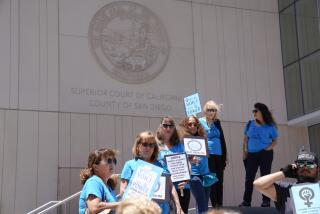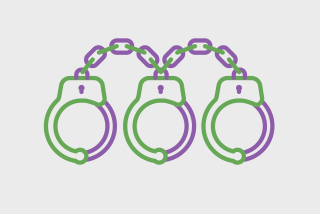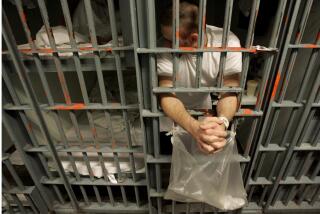Cost Should Be a Factor in Prison Sentences
Most public spending decisions involve some measure of oversight. The criminal justice system is an exception. The cost of incarcerating one person in prison for a single year in California is nearly $31,000. Yet, in sentencing offenders to prison, judges are not expected to -- indeed, they are not statutorily permitted to -- consider cost.
Why should this be? After all, politicians are routinely grilled on how they intend to pay for proposals to expand healthcare, education or other social programs. In most spheres of government, it is understood that benefits have to be weighed against costs. But when it comes to criminal justice, safety and peace of mind are precious commodities, and the assumption is that they justify the expenditure not just of substantial sums but of whatever it takes.
The result is the $5.7-billion-a-year Department of Corrections, the largest state agency in California.
Granted, murderers, rapists and child molesters should be locked away at any cost. But should we really do the same in cases involving nonviolent crimes such as drug possession and theft?
Given the significant costs of incarceration and the demands of mandatory sentencing schemes such as three strikes, isn’t it appropriate to give thought to introducing cost into the sentencing equation?
Simple possession of a controlled substance provides an apt starting point. When punished with imprisonment, the crime carries a sentence of 16 months, two years or three years. A two-year sentence, or the “mid-term” as it is referred to in the parlance of criminal practice, translates to a cost of nearly $62,000.
The price jumps significantly if the offender has prior convictions; a three-strikes sentence -- which requires a minimum of 25 years in prison -- costs more than $750,000, before adjustment for inflation.
Even when parole and the moderating effect of Proposition 36, the initiative that provides an opportunity for drug treatment, are factored in, the fiscal effect remains enormous. Eight and a half percent of the prison population (or more than 13,000 people) are serving prison sentences for simple possession of drugs. Is this a reasonable expenditure? Is it worth the cost to society to keep drug users off the streets (especially when the cost of incarcerating drug offenders outstrips all but the most exclusive private rehabilitation clinics)?
Or consider another common criminal offense: petty theft -- a theft of less than $400 -- with a prior. A person convicted of misdemeanor shoplifting who is sentenced to serve any time in jail may be charged with a felony if caught stealing again and punished with up to three years in state prison. Roughly 5,500 people are serving prison sentences in California for this crime, including more than 100 serving a minimum of 25 years for the offense as a third strike.
Their sentences reflect the judgment that shoplifters and thieves should be punished, and if they don’t learn their lesson the first time, a harsher punishment is warranted. The underlying reasoning is self-evident, but the solution appears to have been calculated without regard to economics.
Incarcerating shoplifters at an annual cost of nearly $31,000 each is probably applauded as good public policy by merchandising executives, but taxpayers might secure greater value from other uses of the same funds. For example, a teacher in California earns an average of a little more than $54,000 a year.
Of course, legislation targeting reductions in prison commitments will invariably be assailed as being soft on crime. Meaningful change is unlikely to occur until the electorate more viscerally connects criminal penalties to taxpayer costs. Until then, we might at least consider permitting judges to take account of the resources they are being asked to commit on our behalf.
R. Konrad Moore is a deputy public defender in Bakersfield.


